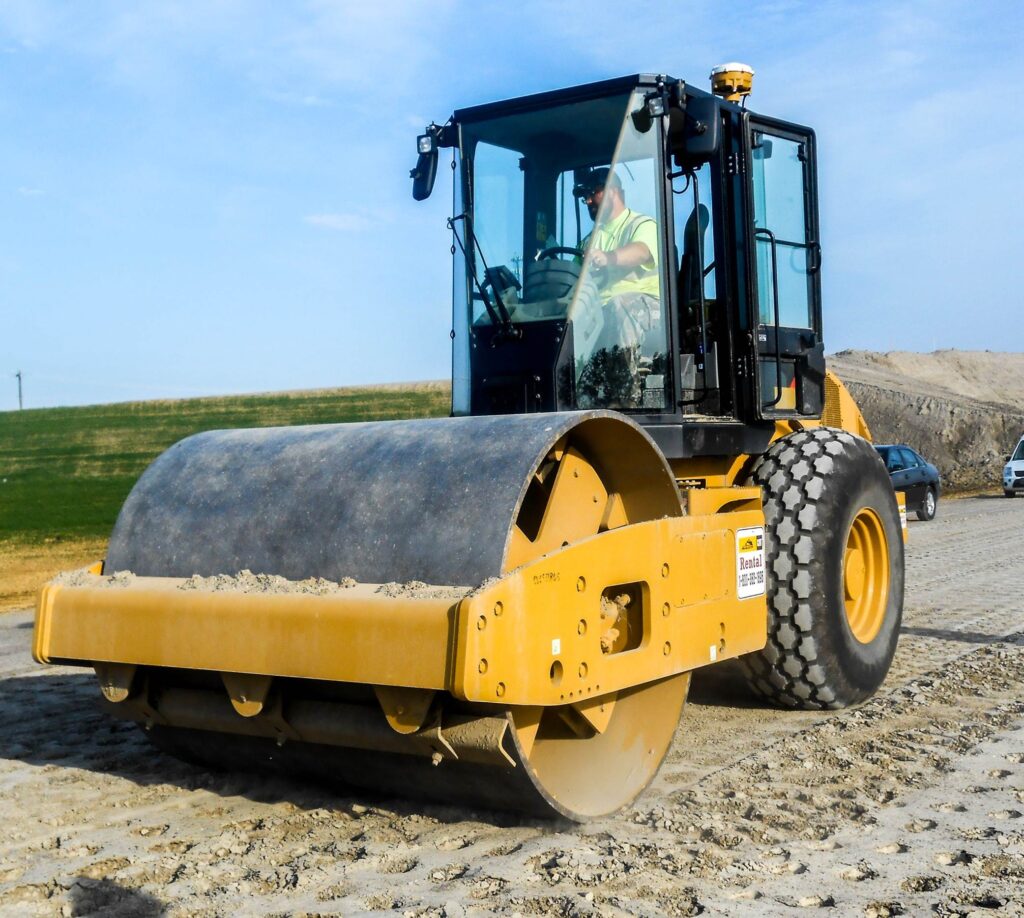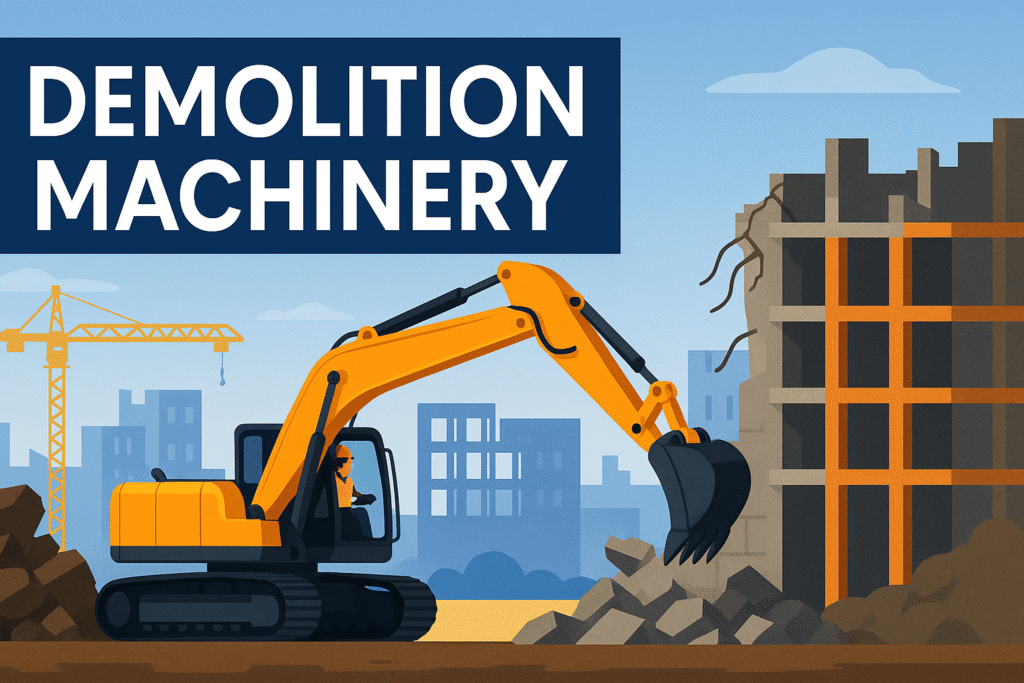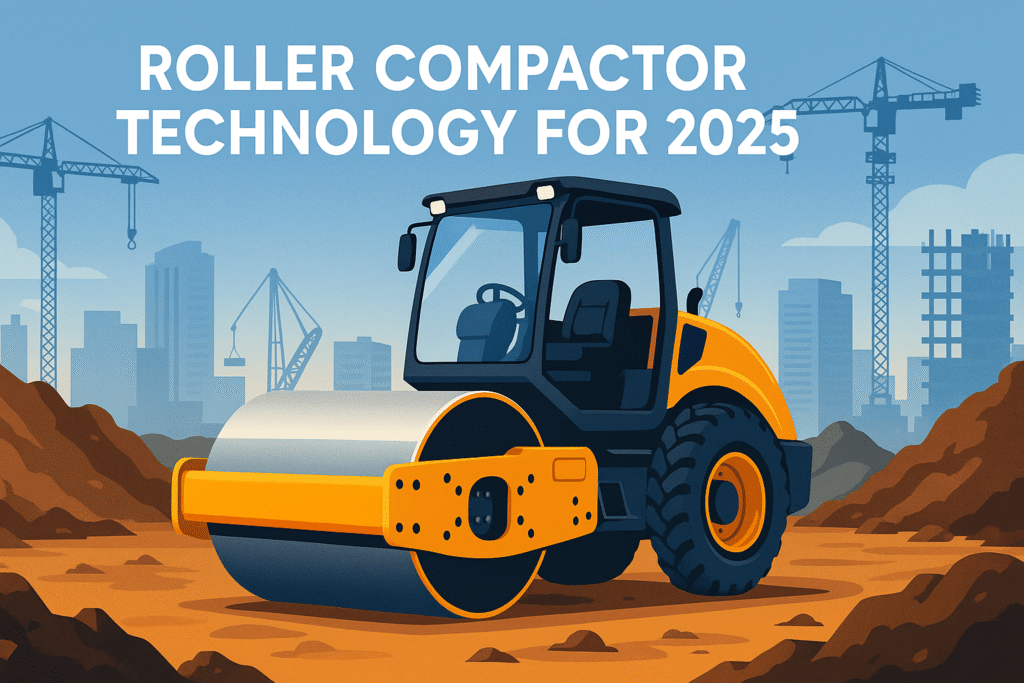Mastering Compaction with Vibratory Rollers for Construction Success
Introduction to Vibratory Rollers

Vibratory rollers are made to effectively compaction several kinds of materials. Their main purposes are to lower the air spaces between particles, therefore producing a denser and more stable surface. By applying vibration, the rollers help the particles to be rearranged into a more compact form. Inappropriate compaction could cause buildings to settle and become unstable, therefore creating possible hazards and expensive repairs needed.
Vibratory rollers are absolutely essential for infrastructure developers, civil engineers, and construction experts in guaranteeing the lifetime and safety of projects. We will go over the several kinds of vibratory rollers, their uses, new technical developments, advantages, best practices for operation, and much more in this thorough guide.
Types of Vibratory Rollers
When it comes to vibratory rollers, there are several types to choose from, each catering to specific applications and project requirements. Understanding these types can help you select the most suitable roller for your needs.
Single Drum Rollers
Granular products including gravel, sand, and crushed rock are often compacted using single drum rollers. Their single big drum in the front and tires at the back give great traction. Often used in road building and soil compaction jobs, these rollers are renowned for their adaptability. On cohesive soils, they might not be as successful though.
Double Drum Rollers
As their name implies, double drum rollers have two drums—one at the front and one at the rear. For asphalt surfaces, this design is perfect and lets consistent compaction possible. Road development and maintenance initiatives extensively employ these rollers. Although they provide better compaction, their hard construction could make them unsuitable for uneven ground.
Vibratory Plate Compactors
Smaller and more maneuverable than drum rollers are vibratory plate compacts. Small projects like driveways and sidewalks as well as limited regions for compaction call for them. Residential and small-scale builders often choose these lightweight and simple to use compactors.
Every sort of vibratory roller has certain benefits and drawbacks. The particular needs of your project—including the sort of material being crushed and the site conditions—will determine the correct one.
How Vibratory Rollers Work
Understanding the compaction process and the importance of vibratory rollers would help one to really value these devices. Compaction is the process of lowering the air content in a material hence raising its density and stability. Combining dynamic force with static weight allows vibratory rollers to do this.
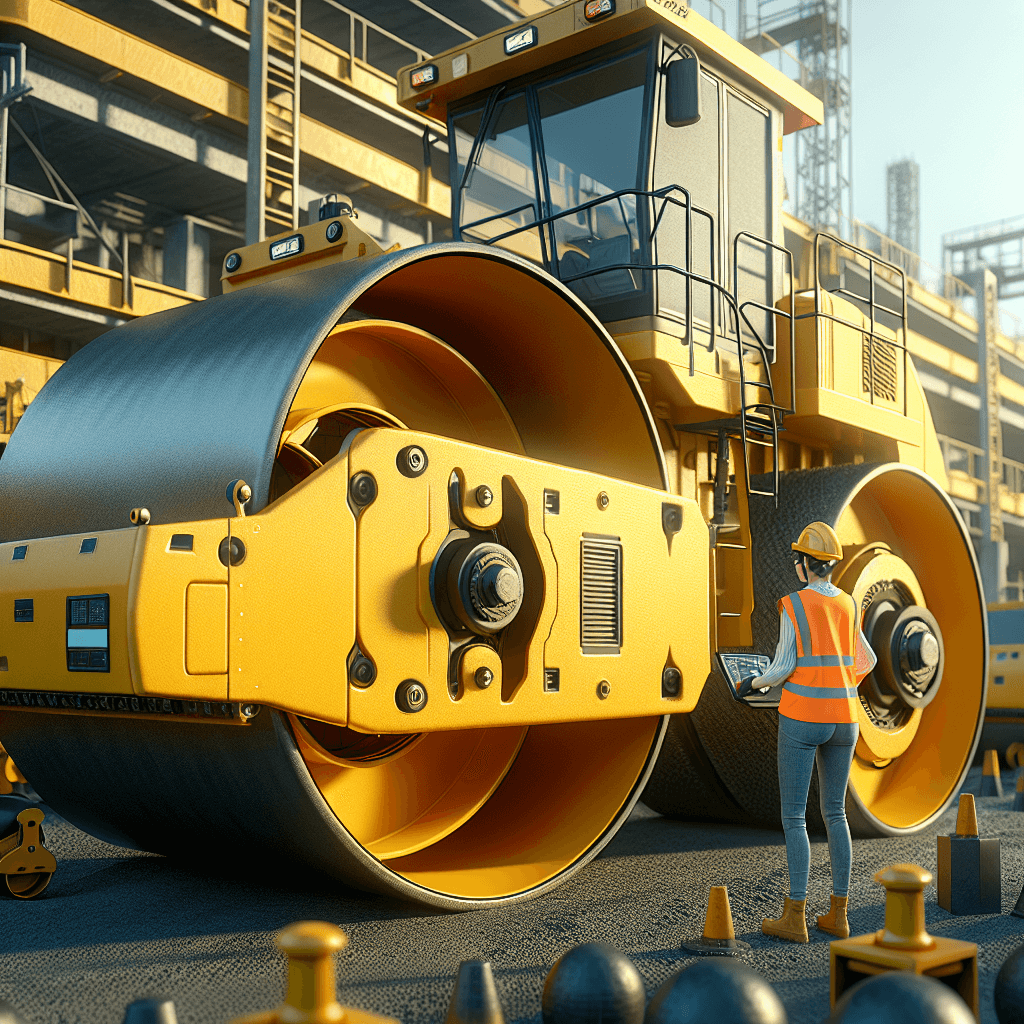
The Compaction Process
The compaction process starts with highly frequency vibrating roller’s drum or plate. The particles in the material reorganize and settle into a denser form under this vibration. The roller’s stationary weight helps to compress the stuff even further. This double action produces a well-compacted surface resistant to environmental stress and heavy loads.
Factors Affecting Compaction Efficiency
Compaction’s efficiency is influenced by several elements including type of soil, moisture content, and material layer thickness. Granular soils like sand and gravel, for example, react well to vibratory rollers; cohesive soils like clay may require extra moisture to reach ideal compaction. Plan your compaction procedure with consideration for these elements.
Best Practices for Effective Compaction
To ensure effective compaction, follow these best practices:
- Layer Thickness: Compact in thin layers to achieve uniform density.
- Moisture Control: Maintain optimal moisture levels for cohesive soils.
- Rolling Patterns: Use overlapping passes to cover the entire surface uniformly.
- Operator Training: Ensure operators are well-trained in using vibratory rollers.
By adhering to these best practices, you can maximize the efficiency of your compaction efforts and achieve the desired results.
Applications in Different Sectors
Vibratory rollers find applications in various sectors, making them indispensable tools for construction and infrastructure projects. Let’s explore some of the key areas where these machines excel.
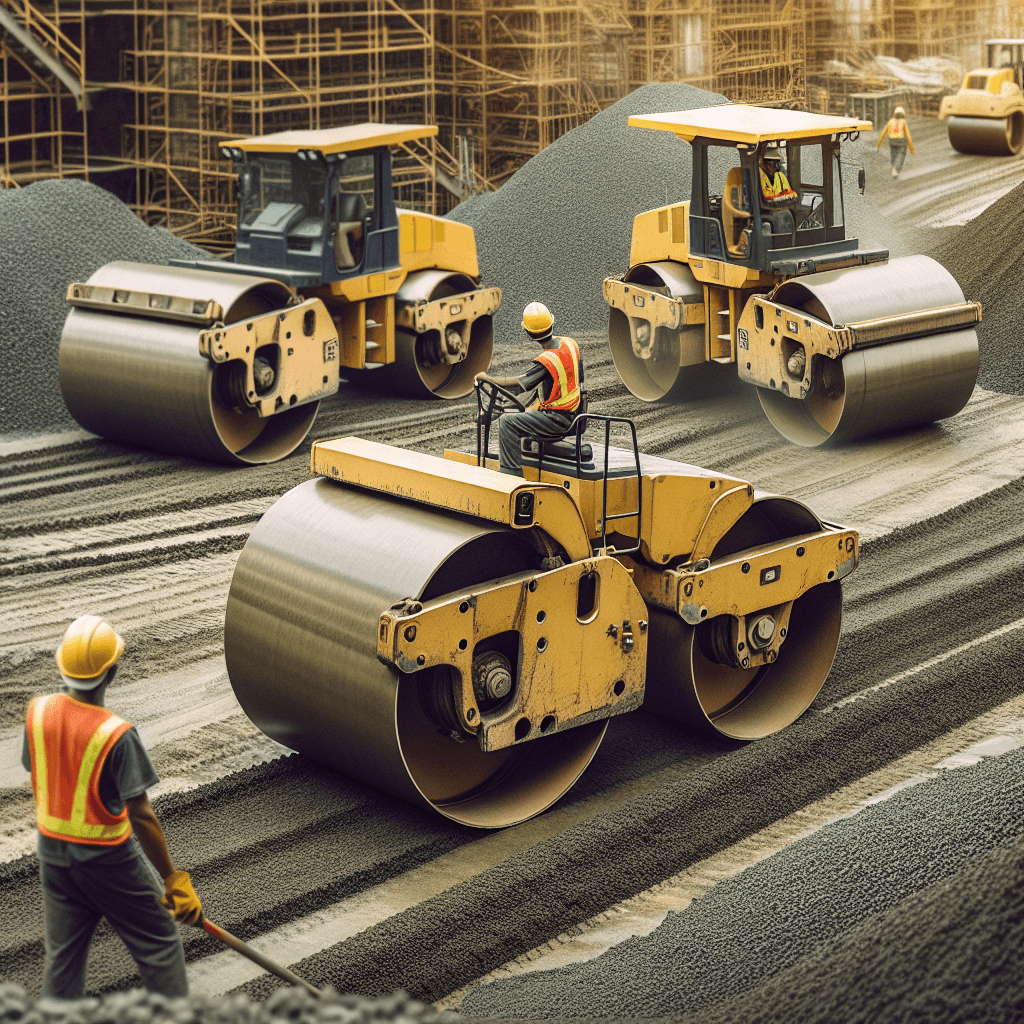
Construction Projects
Vibratory rollers are used in building, bridge, and other structure construction to get the foundation ready. Correct compaction guarantees that the ground will neither settle nor move under large loads. From big business complexes to homes, vibratory rollers are absolutely essential for structural stability.
Road Building
To provide smooth and long-lasting surfaces, road building mostly depends on vibratory rollers Asphalt layers are compacted with these rollers, therefore giving a strong basis for roadways. This produces a road capable of withstanding wear over time, traffic, and weather. According to case studies, safer and longer-lasting roads result from vibratory roller use in road building.
Infrastructure Development
Vibratory rollers help infrastructure projects including dams, railroads, and airports as well. These devices enable little materials to form strong bases for tracks, runways, and retaining systems. Effective projects all throughout the world have shown how well vibratory rollers guarantee the safety and lifetime of important infrastructure.
Advancements in Vibratory Roller Technology
The field of vibratory rollers is constantly evolving, with technological advancements enhancing their efficiency and functionality. Staying updated with these innovations can give your projects a competitive edge.
Intelligent Compaction Systems
Intelligent compaction systems use sensors and GPS technology to monitor and control the compaction process in real-time. These systems provide valuable data on soil stiffness, moisture content, and roller performance. This information allows operators to make adjustments on the fly, ensuring optimal compaction quality.
Eco-Friendly Designs
Environmental sustainability is a growing concern in construction. Manufacturers are developing vibratory rollers with eco-friendly features such as reduced emissions and fuel consumption. These designs not only benefit the environment but also lead to cost savings for construction projects.
Advanced Drum Configurations
Improved compaction performance results from drum design innovations. Certain vibratory rollers include segmented drums that may change to fit uneven surfaces, therefore offering consistent compaction. Others fit urban buildings as their oscillating drums lessen vibrations sent to the nearby environment.
These developments are changing the use of vibratory rollers by increasing their efficiency, sustainability, adaptability to different project needs, and economy.
Benefits of Using Vibratory Rollers
Using vibratory rollers in construction and infrastructure projects offers numerous benefits that contribute to overall project success.

Enhanced Compaction Quality
Vibratory rollers offer superior compaction quality compared to other methods. Static weight and dynamic force guarantee that materials are densely and evenly compacted. This produces a strong and long-lasting surface able to resist environmental elements and severe loads.
Cost and Time Savings
For building projects, effective compaction translates into financial and time savings. Quick and efficient completion of compaction operations by vibratory rollers helps to minimize rework and repair needs. This effectiveness lets initiatives keep within budget and on time.
Environmental Benefits
Contemporary vibratory rollers are made with environmental factors in mind. Lower fuel use, fewer pollutants, and environmentally friendly materials help to produce a better building process. Furthermore, less likely to erode and cause other environmental problems are well-compacted surfaces.
Using vibratory rollers can help building experts minimize environmental effects and expenditures while still obtaining better results.
Best Practices for Operating Vibratory Rollers
To maximize the performance and longevity of vibratory rollers, it’s essential to follow best practices for operation and maintenance.
Operator Training and Safety Guidelines
Proper training is crucial for operators to use vibratory rollers effectively and safely. Training programs should cover machine controls, compaction techniques, and safety protocols. Operators should also be aware of potential hazards and how to mitigate them.
Regular Maintenance
Routine maintenance is essential to keep vibratory rollers in optimal condition. Regularly check for wear and tear, lubricate moving parts, and inspect the drum or plate for damage. Addressing maintenance issues promptly can prevent costly breakdowns and extend the lifespan of the equipment.
Adherence to Manufacturer Guidelines
For running and maintaining vibratory rollers, always follow manufacturer instructions. These rules offer insightful advice on correct use, suggested repair schedules, and troubleshooting techniques. Following these suggestions guarantees that the machinery runs at best performance.
Following these best practices will help you to guarantee the safe and effective operation of vibratory rollers, therefore improving compaction outcomes and extending the equipment life.
Common Challenges in Compaction
Despite the effectiveness of vibratory rollers, various challenges can arise during the compaction process, potentially compromising the integrity of the work. Understanding these challenges is crucial for successful project execution.
Soil Type Variability
Variability in soil types over a site presents one of the most important difficulties. Because of their cohesive qualities and different moisture content, some soils—like clay—may be challenging to compact. This inconsistency can cause unequal compaction and maybe produce weak places in the foundation.
Moisture Content Issues
Effective compaction depends on a proper moisture content. While too little may make the ground unmanageable and compaction resistant, too much moisture might cause strength to drop. Avoiding these traps depends on constant monitoring and modification of moisture levels throughout the compaction process.
Insufficient Layer Thickness
Compacting material in excessively thick layers can hinder the compaction process, as the underlying layers may not receive adequate pressure. This often results in inadequate compaction and settlement issues over time. Operating within recommended layer thickness guidelines is essential to prevent these issues.
Operator Experience
The operator’s knowledge and skill have a big impact on the success of the compaction operation. Insufficient operator training might cause poor equipment use, therefore affecting compaction techniques and maybe material damage under the roller.
To guarantee best compaction outcomes and the lifetime of the built infrastructure, addressing these problems calls for meticulous planning, ongoing monitoring, and extensive personnel training.
Maintenance and Troubleshooting Tips for Vibratory Rollers
Proper maintenance and troubleshooting are key to ensuring the longevity and effective performance of vibratory rollers in construction projects. Here are some essential tips to consider:
Daily Inspection
Before operating a vibratory roller, conduct a thorough daily inspection. Check fluid levels, brakes, and tire pressure, and inspect the drum or plate for any signs of damage or wear. Addressing minor issues promptly can prevent more significant problems later.
Cleaning
Keep the roller clean by removing dirt, debris, and material buildup from the drum and undercarriage after each use. This practice helps maintain optimal performance and reduces wear on components.
Monitoring Vibratory Performance
Regularly monitor the vibratory performance of the roller during operation. If there are noticeable changes in vibration intensity or if the roller struggles to maintain compaction, this may indicate issues that require investigation.
Troubleshooting Common Issues
- Unusual Vibrations: If the roller experiences irregular vibrations, check for imbalances in the drum or damages to the bearings. It may also be useful to inspect the hydraulic system for leaks or malfunctions.
- Insufficient Compaction: If the roller is not achieving the desired compaction, verify that the correct operational settings are used, and assess whether the material is at the appropriate moisture content. Additionally, review the layer thickness being compacted.
- Hydraulic Issues: Low hydraulic fluid levels can lead to reduced operational efficiency. If experiencing slow or unresponsive movements, inspect the hydraulic system for leaks or blockages and refill as necessary.
Scheduled Maintenance
Create a routine maintenance regimen grounded in manufacturer recommendations. Periodic checkups, replacement parts, and system calibrations should all help to guarantee consistent performance and stop unanticipated breakdowns.
Following these maintenance and troubleshooting guidelines helps operators to make sure vibratory rollers stay in good condition, therefore supporting the success of building and infrastructure projects.
Advancements in Compaction Technology
Major developments in compaction technology have surfaced as technology develops, so improving the effectiveness and efficiency of vibratory rollers and other compaction tools. These improvements in operational performance help to produce better general project results as well.
Intelligent Compaction
Intelligent compaction technology—which uses sensors and data analytics to offer real-time input on the compaction process—is among the most remarkable developments. These systems track variables including soil stiffness and moisture content, which lets operators dynamically modify methods to reach ideal compaction levels and avoid either over- or under-compaction.
Automated Controls
Additionally developed to enable precision compaction are automated control systems. By automatically controlling vibration frequency and amplitude, these systems guarantee constant performance over many soil conditions and situations, therefore reducing the need for hand corrections. This technique raises general production and reduces the effect of human mistake.
Eco-Friendly Innovations
Modern compaction machines are being built with fuel-efficient engines and electric or hybrid choices in response to growing sustainability issues within the building sector. These environmentally friendly improvements cut running expenses in addition to carbon emissions. They also frequently have noise-reducing technologies, which qualify for usage in metropolitan environments where noise pollution is a problem.
Enhanced Safety Features
Advanced safety measures on modern compaction equipment help to guard operators and nearby workers. These comprise better visibility systems, proximity sensors, and automated shut-off devices triggered under dangerous circumstances. Such safety developments serve to reduce the hazards related to the running of machines on building sites.
Accepting these developments in compaction technology will help building experts increase output, improve project results, and help to create a more sustainable future in infrastructure development.
Conclusion
Important instruments in the building and infrastructure sectors are vibratory rollers. Any project needs them since they may save time and money, provide excellent compaction quality, and help environmental sustainability. Understanding the several kinds of vibratory rollers, their uses, how they operate, and best practices for operation can help you to maximize their possibilities for your projects.
Keep ahead of the curve by following best practices to maximize efficiency and performance and by tracking developments in vibratory roller technology. Vibratory rollers will be essential for the success and lifetime of your projects, whether you are building roads, buildings, or other infrastructure.
See our staff for more ideas and professional guidance on streamlining your building techniques. With the most recent in compaction technologies, we are here to assist you in reaching project goals.


